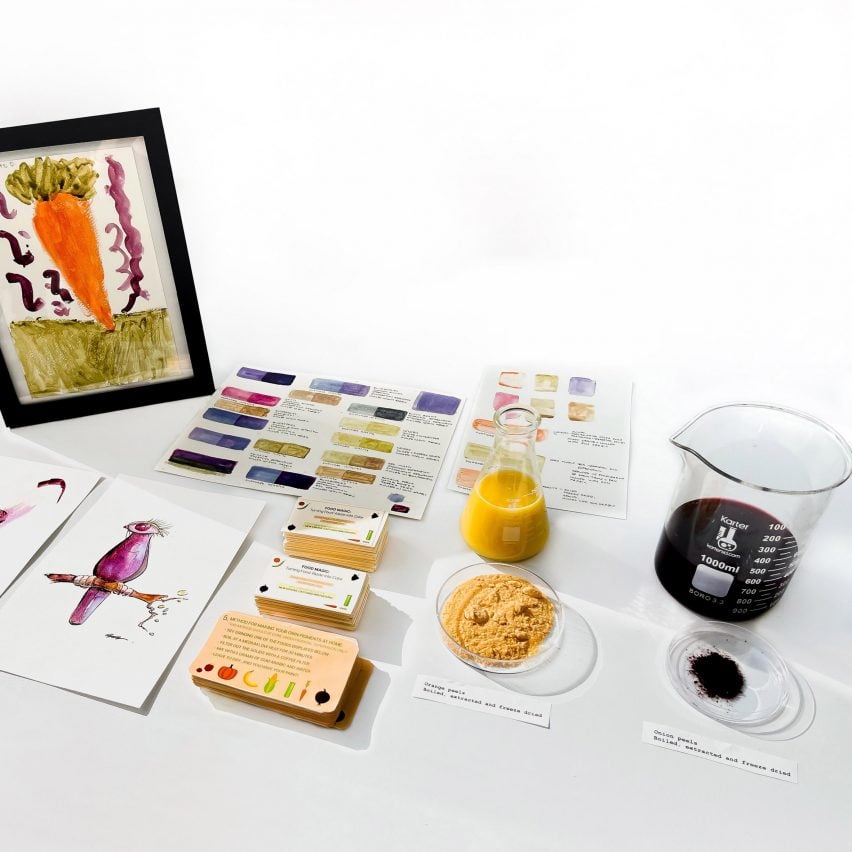A team of Virginia Tech researchers have developed the Sustainable Art Painting toolkit for kids, which converts food scraps generated by US schools into watercolour paint.
Lead by Virginia Tech assistant professor of industrial design Yoon Jung Choi, the team created the kit to address the estimated 90 billion pounds of food waste generated by US schools annually.
The kit contains three sorting bins for compost and several tools the team developed that convert the scraps into watercolour paint.

“Nearly 50 per cent of the food wasted in US schools consists of fruits and vegetables,” said the team.
“Instead of treating these scraps as trash, we saw them as an untapped source of natural pigments,” it continued.
“By reframing discarded fruits and vegetables as a valuable resource, we offer a sustainable alternative to conventional paints while empowering students to think critically about waste and sustainability.”

The process is broken into three main steps: sorting the compost, extracting pigments and using the pigments to create paint.
The research team created colour-coded waste bins for the first step, which correspond to the paint colour eventually produced by the process. The bins contain a small window to view the decomposing contents and can link together to create a larger, modular collection station if needed.

After scraps are sorted, they are placed in a borosilicate glass beaker that mimics the mechanism of a French coffee press.
Water is poured over the compost, and then the contraption is heated, which allows the water to further absorb the natural pigments extracted from the fruits and vegetables below.
Then, like a French press, students push down a mesh sieve to compress the solid contents to separate them from the pigmented liquid.
This liquid is then poured into a borosilicate glass chamber, where it is atomised through evaporation underneath a glass dome. The resulting concentrated pigment falls onto a mulling palette below.

Students then mix the extracted pigment with gum arabic to create a paint, which can be transferred into pans or containers for use.
The team worked with local elementary and middle school students to co-design the project and led workshops to walk others through the process. Paintings by students were eventually exhibited.

“As we continue to refine and expand this program, we envision it reaching more schools, communities, and educators, inspiring creative approaches to sustainability beyond the art classroom,” said the team.
“By blending design, science, and education, this initiative empowers students to be active participants in shaping a more circular, resourceful future.”
Other projects designed for children include an “interactive architecture game” by Swiss architect Sébastien Tripod and AA Material Arcade designers that made use of waste materials gathered from workshops during last year’s London Design Festival and a series of unconventional art supplies by Tokyo brand Woset.
The photography is courtesy of Yoon Jung Choi
The post Virginia Tech designers create kid's toolkit for converting compost into paint appeared first on Dezeen.

